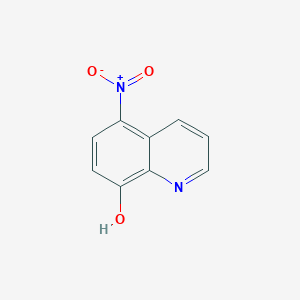-
Categories
-
Pharmaceutical Intermediates
-
Active Pharmaceutical Ingredients
-
Food Additives
- Industrial Coatings
- Agrochemicals
- Dyes and Pigments
- Surfactant
- Flavors and Fragrances
- Chemical Reagents
- Catalyst and Auxiliary
- Natural Products
- Inorganic Chemistry
-
Organic Chemistry
-
Biochemical Engineering
- Analytical Chemistry
- Cosmetic Ingredient
-
Pharmaceutical Intermediates
Promotion
ECHEMI Mall
Wholesale
Weekly Price
Exhibition
News
-
Trade Service
Type 2 diabetes accounts for more than 90 percent of people with diabetes and is the most common and costly disease in the world.
as a disease that is not yet effectively curable, patients can only temporarily improve high blood sugar by taking one or more anti-diabetic drugs daily.
hypoglycemia and weight gain are common side effects of medication, and non-surgical methods do not provide sustainable relief.
As early as 2016, researchers at the University of Washington in the United States published a study in Nature Medicine that showed that in rodent models with type 2 diabetes, a single injection of fibroblast growth factor 1 (FGF1) in the brain continued to relieve hyperglycemia (the blood sugar level of 200 mg/dl was maintained for 17 weeks).
anti-diabetes effect is not a secondary effect of weight loss, nor does it increase the risk of hypoglycemia, but rather increases the ability to remove glucose from the blood.
, however, the mechanisms for such a role are not yet clear.
when it comes to fibroblast growth factors, we should be no strangers.
's not without its figure in modern surgery and cosmetic surgery, you may have credit for the cosmetic repair after cutting your eyelids.
If an injection of FGF1 allows the body to remove glucose on its own and continues to function, it is bound to alleviate the pain of the patient's insisting overdose and avoid the side effects of taking the drug.
four years, the research finally made new progress and was re-published in Nature Communications, a sub-journal.
previous study, the team found that the inner base base (MBH) of the hypothyclycermic brain is the brain region responsible for the continuous remission of high blood sugar by FGF1 in the brain.
In this way, after an in-depth study of MBE's response to FGF1 cells, they found that hypothycline nerve glial cells were the main target of FGF1's action, and that continuous diabetes relief depended on complete black cortical signaling.
specifically, the researchers combined the discovery of transcriptomic methods with tissue chemistry, electron microscopes, and pharmacological and physiological studies in the body to explore why the brains of diabetic animals have the ability to continuously improve high blood sugar.
results were surprising, with transcription and morphological changes in both monocytes and astrocytes in the days after FGF1 injections in the brain.
Elongation cell module expression maps to the third brain chamber the spatial distribution of astrological glial cells in response to intra-brain injection FGF1 changes at the ultra-microstructure level, and an increase in astrological glial cell coverage of synhapus buttons was detected in the dexterous ratchets of ARC neurons, including Agrp neurons.
injection of FGF1 in the brain, there were also strong changes in the transcriptional group of Agrp neurons, including the continued inhibition of gene expression in Agrp and Npy.
the relationship between these neurons may be unfamiliar, explained here.
brain contains a variety of specific neurons that perform different functions to regulate the body's behavior and metabolic balance.
the bow nucleus (ARC) of the hypothyroids contains two main types of neurons that regulate metabolism: those that suppress appetite, such as those of ahexinogen (POMC), and those that promote appetite, including neuropeptide Y (Npy) and agrp neurons.
and FGF1's suppression of appetite-promoting neurons in the brain will cause patients to eat less.
several studies of the role of in-brain injection FGF1 on Agrp neurons have shown that the decrease in black cortical signaling is related to the pathogenesis of diabetes in rodents and humans, while Agrp neurons are endogenous inhibitors of black cortical signaling.
, the researchers looked at whether FGF1's continued anti-diabetic effects depended on complete black cortical signaling.
found that although initial anorexia and blood sugar reduction did not require complete black cortical signaling, it was necessary for a sustained anti-diabetic effect induced by intra-brain injections of FGF1.
FGF1-induced persistent diabetes relief is a black cortical dependence of these observations suggest that the role of FGF1 on glial cells may alter the function of Agrp neurons, so additional work is needed to assess this possibility.
If the above inference is true, then the continuous sugar-lowering effects of central FGF1 may regulate one or more types of glial cells in the healing brain, which in turn alters the function of the sugar-regulated neural circuits in a highly persistent manner.
, this is a substantial therapeutic finding that understanding the relationship between different cell responses to FGF1 and associated blood sugar normalization may reveal new strategies for continuously alleviating diabetes.
references: s1 #Ack1 s3







